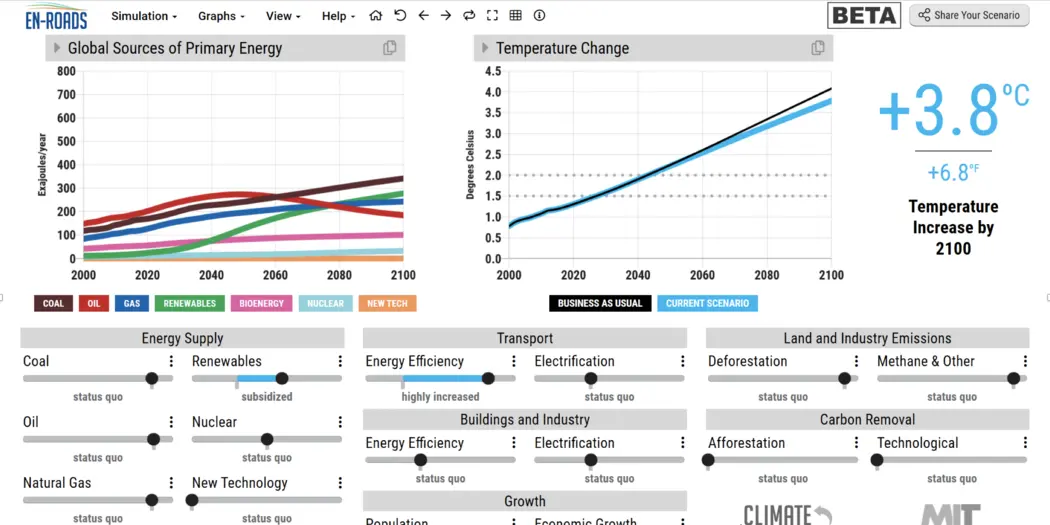Climate change is a major issue. Almost everyone wants to do something about it, but it is challenging to know what levers to pull to make real change. Do we increase energy efficiency, subsidize renewables, or decrease deforestation? What will it take to stabilize the planet’s increasing temperature at a safer level?
Simulations may be the key to finding the answer. Based on MIT’s long tradition of system dynamics modeling, Climate Interactive created the En-ROADS simulation in which people can see the impact of changing different levers. They find connections, play out scenarios, and see what works to address climate change.
Depending on how participants move levers along a spectrum, they can see the projected change in the planet’s temperature. For example, they could move the renewables category from taxed to status quo to subsidized, all the way to highly subsidized. That’s just one of 18 different levers they can adjust in the simulation, which instantly plots out temperature changes to the year 2100.
Credit: En-ROADS
While these simulators have been used by the U.S. State Department, the Chinese government, and the United Nations’ Secretary-General’s office, they also are being used by universities, governments, civil society, and businesses in 94 countries, engaging over 100,000 registered participants.We’re also seeing a strong grassroots interest in the simulator through the organization’s Ambassador Program. The goal of the program is to train one in a million people to educate their communities about the critical nature of climate change. So far, we have 212 ambassadors in 40 countries.
We know there is not one silver bullet to fix climate change. The ambassador program helps a lot of people to lead conversations and help find solutions. The simulator teaches participants about the levers involved in this issue and empowers them to help move toward better climate policy.
There is a significant appetite for this grassroots approach. So far, we’ve had 700 people attend our training sessions, which last seven to nine hours. And we have several hundred more registered for future webinars.
An interesting aspect of the simulator is that it addresses multiple global issues. Through trainings, we can show participants the links between healthcare policy, urban living, sustainable food supply, and the climate. We show how these issues can be simultaneously solved if we design good holistic policy.
The simulator helps to bring people from different backgrounds together to see these linkages that they otherwise might not see. It shows them hard-to-imagine scenarios like projecting out 100 years of temperature change. And it gives them the opportunity to move levers and fail. By failing, they can try something else and see the results. This is a powerful learning tool.
It’s also a powerful grassroots tool for people who want to make a difference and effectively advocate for policies we need for a livable planet.
Travis Franck is a research affiliate at the MIT Sloan School of Management and chief technology officer of Climate Interactive.




